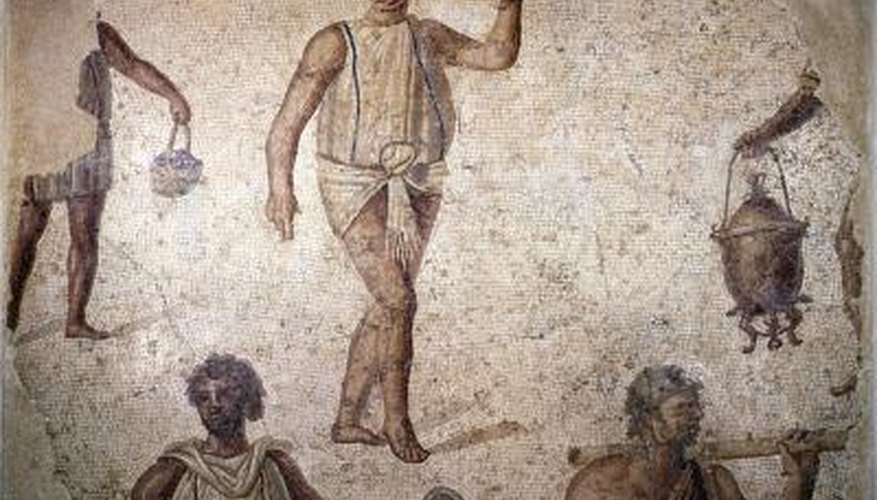Historians respect the Roman Empire as one of the largest empires in history, and one that contributed greatly to mankind in the form of law, philosophy, culture and technology. There's no denying that slavery was a major part of the Roman Empire, from gladiators fighting in coliseums to household slaves common with every wealthy family.
Normal Roman Diet
A normal Roman diet actually varied widely depending on the class of citizen. Poor Romans ate mostly vegetables with porridge and bread, having an occasional piece of meat when available. Middle class and wealthy families enjoyed larger meals of meat, wine, honey cakes and other sweets. Household slaves would often be fed the leftover table scraps or a diet equivalent to that of poor Roman citizens.
- A normal Roman diet actually varied widely depending on the class of citizen.
- Household slaves would often be fed the leftover table scraps or a diet equivalent to that of poor Roman citizens.
Varying Slave's Share
The amount and quality of food Roman slaves enjoyed depended on the level of importance. A common house slave may have only received small portions of leftovers, while a slave with a valued skill like cooking would receive more and better food as a reward to continue the high level of desirable service. The amount of food received by slaves would also vary simply based on the kindness of the slave owner.
Gladiator Diet
Almost all gladiators were slaves, and their diets were heavy in calories. Gladiators fought best when they were bulked up and had plenty of calories. These slaves risked their lives and were able to eat heartily to increase body weight. Their diets were heavy in barley, grains, and porridge. This high-carbohydrate diet was so common that gladiators were sometimes nicknamed barley eaters.
- Almost all gladiators were slaves, and their diets were heavy in calories.
- This high-carbohydrate diet was so common that gladiators were sometimes nicknamed barley eaters.
Position
The single biggest factor in the diet of a slave was position. Just as Roman citizens fell into various levels of social hierarchy, slaves were subject to a similar hierarchy. Those at the top ate well and those at the bottom barely ate at all. Gladiators received better treatment than many Roman citizens in both food and medical attention, while workers for the mines were the least skilled and received the least food.
- The single biggest factor in the diet of a slave was position.
- Gladiators received better treatment than many Roman citizens in both food and medical attention, while workers for the mines were the least skilled and received the least food.
